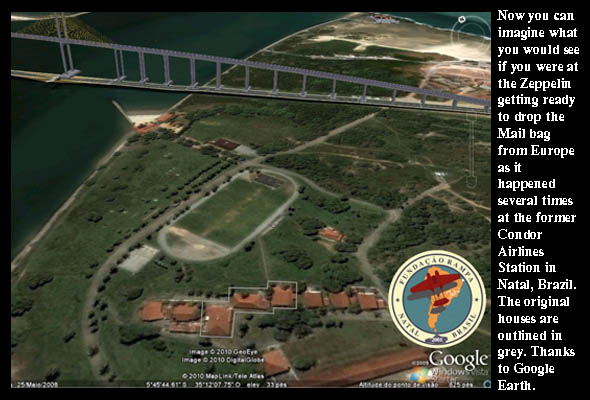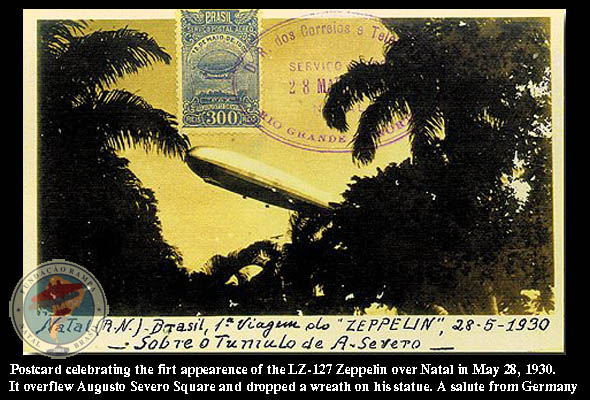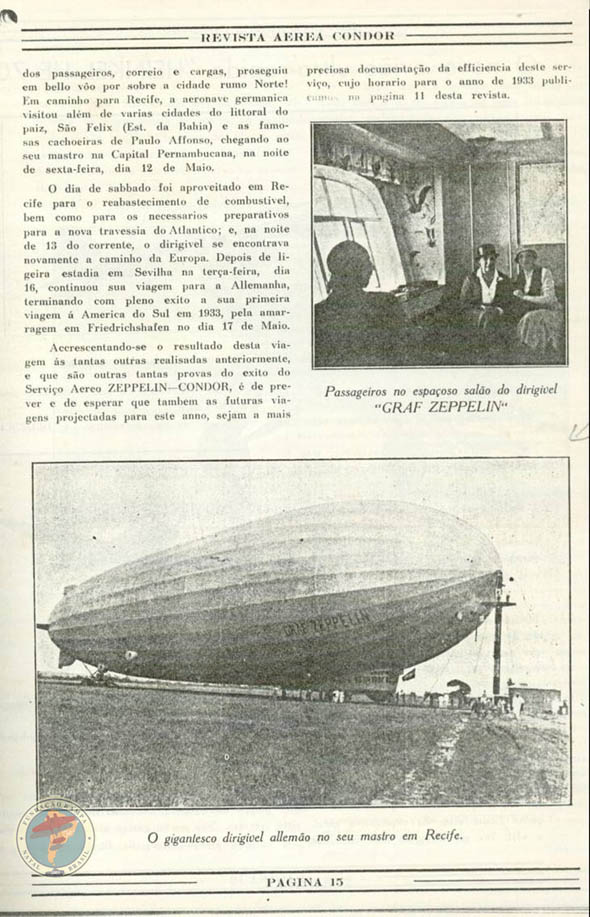
'30s Condor Radio Station in Natal unveiled
Our research showed it inside Army Camp






The Germans from Syndicato Condor arrived in Natal in 1930.
At first they run mail and passengers flights across the Brazilian Coast, from Natal to Porto Alegre and then internationally to several countries in South America. Also they had lines inside Brazil, called "Penetration Lines".
Syndicato Condor belonged to German Lufthansa Airlines.
In 1933 an agreement was made between Lufthansa and Zeppelin to transport passengers and mail from Europe to South America, a very lucrative market, and because Zeppelins were slow the mail bags were dropped over the Condor Station in Natal uppon arrival in Brazil and followed its way in Condor planes, much faster. Then, the Zeppelins would touch Brazilian soil in Recife, to drop passengers and to board new passengers for the rest of the way. Final point was Rio de Janeiro, Brazil's capital, back then. Take a look on the reproductions of Condor Magazine from 1933 supplied by our Brazilian Contributor Fernando Lins
Well organized as the Germans are, their station in Natal was composed by a nose hangar, a ramp, fuel tanks, water tower (also observation point), living quarters and a radio station.
In 1934 Lufthansa begun her own mail service from Europe to South America in Dornier Wals, with a catapult ship in the middle of the Atlantic and then with two catapult ships, one close to Fernando de Noronha and another close to Africa. Final point for Lufthansa planes was Natal's Condor Station. Those Mail flights lasted up to Germany entrance in WW2, when this service was disrupted.
Nonetheless, the Zeppelins, first LZ-127 Graf Zeppelin and later LZ-129 Hindenburg contined to visit Brazil, and of course Natal, up to 1937.
The Germans from Zeppelin paid homage to Brazilian airship pioneer Augusto Severo, in the form of two overflights of Augusto Severo Square in Natal, to drop wreaths over her statue. A piece of one of those wreaths is preserved today at Instituto Historico e Geografico do Rio Grande do Norte in Natal, Brazil.
Well, nothing lasts forever and with the advent of WW2, Brazil aligned with the U.S. and declared war on the Axis powers and Condor paid a price for belonging to Germany, it closed its activities until being nationalized. In the meantime, Condor Station in Natal was abbandoned and took over by the U.S. Navy which transformed the whole area (Pan Am Seaplane Station + Condor Seaplane Station + Federal Vacant Land), into the USN Seaplane Station, a huge base with dozens of buildings, a new nose hangar, a parachute loft, a open air theater and barracks. That Station took 3 years to be completed and after the war was handed over to the Brazilian Army, being the former Pan Am Station handed over to the Brazilian Air Force, exsting today and known popularly as "Rampa". But what happend to the former Condor Station?
All the informations revealed that it was torned down, once the Army was using the American buildings and all the Condor riverside facilites were demolished. But a closer look to the '30s pictures and the USN plans revelead that three of the houses in today's Officers villa were not in the original USN plans, instead, in Condor pictures. So who built those houses? The Brazilian Army apparently. In one of our several visits to the Army Camp, we asked if we could see "in loco" those buildings because the pictures revealed a coincidence in the position of them to the position of those from Condor. They could be the same ones or new ones erected over the former basementes. What a surprise! Those theree buildings were the original Condor buildings from the Radio Station!!!!! All the rest was gone, including the tall water tower.
Those three houses are what was left of the original Condor Station, that once stood sovreign, on the hill of "Praia da Montagem" as the location is known since the time the Germans first occupied that place.
The Army commander of the 17º GAC, Colonel Leal was informed of the findings. Many hi-rank officers live in those houses. And they thought those were American houses. In fact, those are Brazilian houses erected by German order, once the materials and labour were Brazilian.
Our Contributors in Europe were informed of the findings and have already begun to spread the news. Maybe we will have new tourists coming to Brazil, "historic tourists".